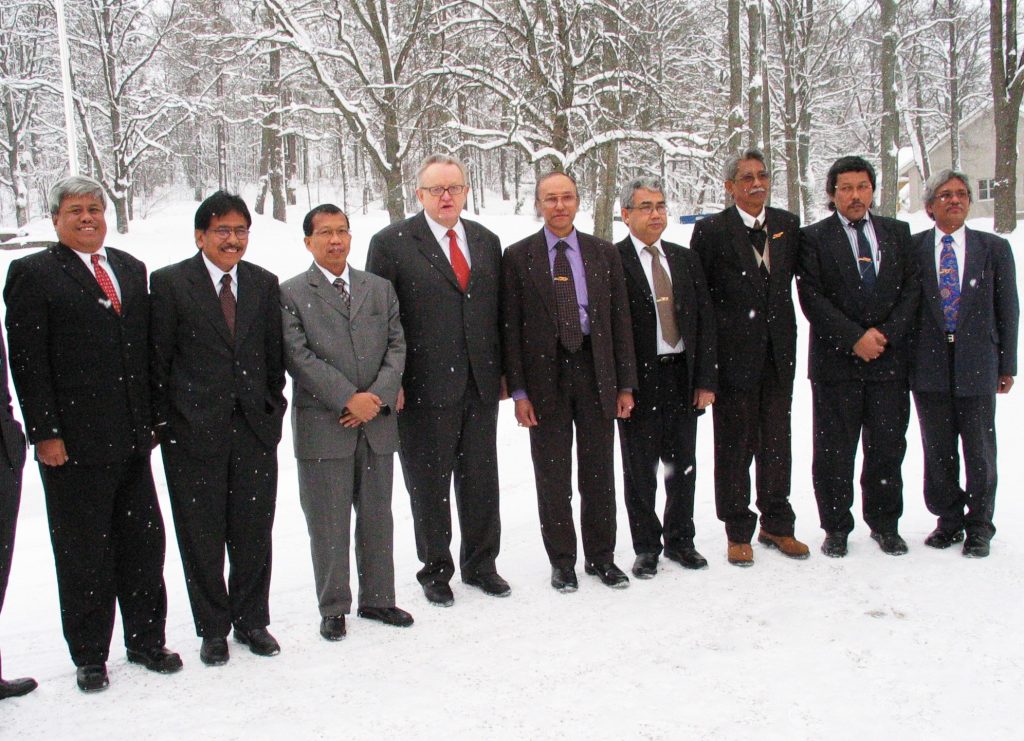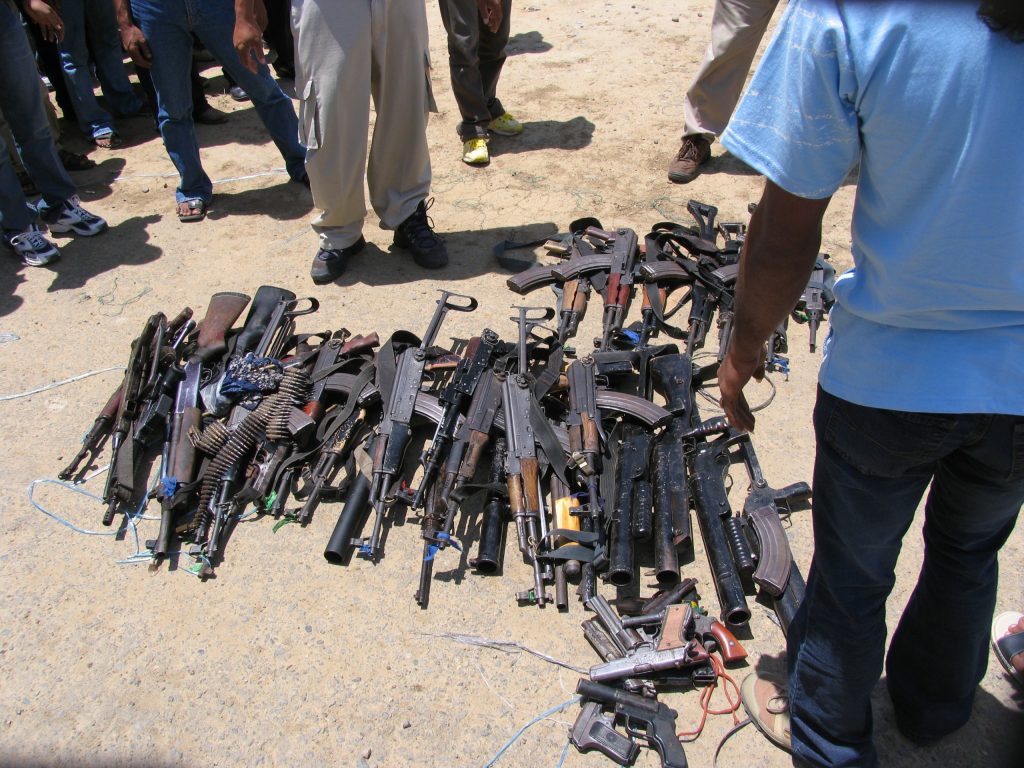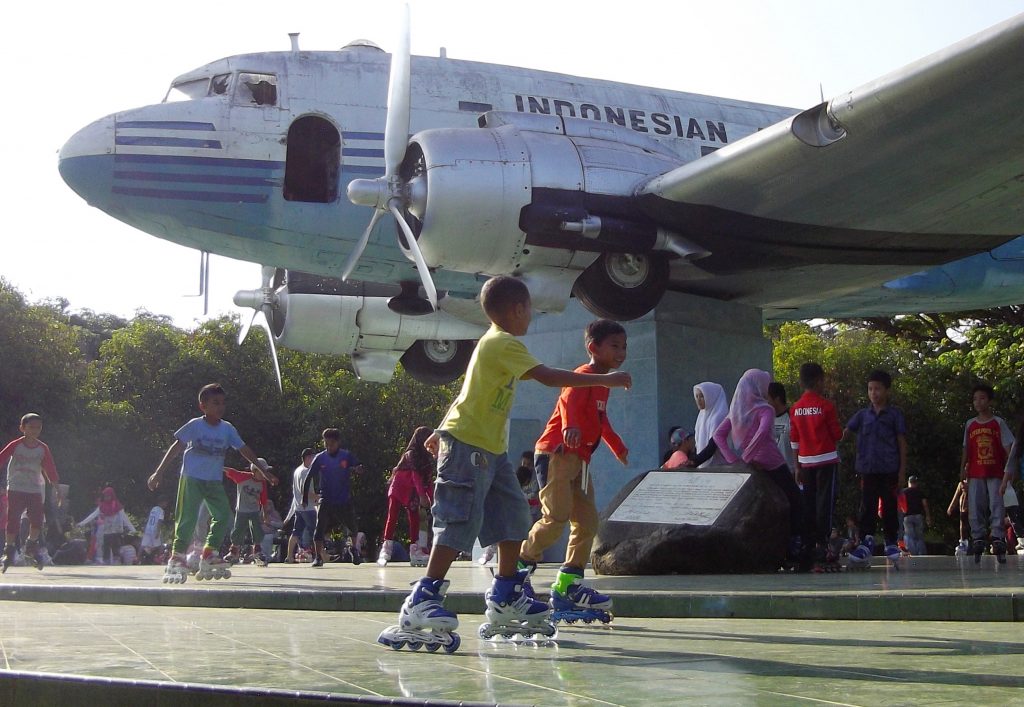The tsunami created the scope for reconciliation in Aceh — could the corona pandemic have a similar effect on current conflicts?
The tsunami and the calamitous devastation it caused paved the way for a peace deal that ended 30 years of violence in Aceh, Indonesia. The crisis exerted pressure for compromises at the peace talks and helped focus on what is possible. The parties to the conflict realised that they would be left isolated if there was no peace. Could the Covid-19 pandemic be such a tsunami factor concerning current conflicts?

The Aceh peace accord was signed by the Minister of Justice of the Government of Indonesia Hamid Awalud and the leader of the delegation of the Free Aceh Movement Malik Mahmud and was witnessed by President Martti Ahtisaari. Photo: Jenni-Justiina Niemi.
It is the last days of January 2005. Freshly fallen snow covers the grounds of Königstedt Manor in the municipality of Vantaa, Finland.
Indoors, in the mansion’s library, a group of dark suited men with grave expressions are seated at a U-shape table. It’s a historic moment. The government of Indonesia and the Free Aceh Movement (GAM) are straining to find a resolution to the 30-year civil war.
The mediator of the negotiations, President Martti Ahtisaari, first asks the parties to honour the memory of the tsunami victims with a minute’s silence.
The tsunami that struck precisely a month before the start of the talks has wreaked the worst destruction on Aceh province. Well over 100 000 people are dead or missing; hundreds of thousands have lost their homes.
Many of those seated at the negotiating table have lost a family member, friend or someone they know.

The representatives of the government of Indonesia and the Free Aceh Movement (GAM) gathered for a group photo with President Ahtisaari in Vantaa, Finland, on January 28, 2005.
EU aid conditional on progress at talks
The tsunami became an important factor contributing to peace in Aceh following 30 years of violence. After seven months of effort, the negotiations mediated by President Ahtisaari and CMI led to the peace agreement of 15 August 2005.
Even though the groundwork for negotiations was laid already before the tsunami, the catastrophe gave new momentum to the talks.
“The tsunami and the calamitous devastation it caused gave a decisive impetus to the negotiations. The parties came to the negotiating table with the attitude that the conflict must be resolved for Aceh to survive,” explains CMI advisor Minna Kukkonen-Karlander.
The Indonesian government understood that international aid would not reach Aceh if the fighting continued. The country’s international reputation was also at stake, which the government had begun to build through various reforms prior to the tsunami.
Ahtisaari used the situation wisely, says Jaakko Oksanen, CMI’s senior advisor, who was involved in the negotiations. Ahtisaari stressed that progress at the negotiations was a condition for receiving the EU’s disaster relief and reconstruction assistance.
“‘Do you think that the EU will provide disaster relief or support reconstruction if there’s a war in the country?’ he asked repeatedly. When this point was made by a third party, the Indonesian government and GAM realised that they would be isolated if there was no solution”, Oksanen recalls.
Following the conclusion of the peace accord, the EU and five members of the Association of South-East Asian Nations (ASEAN) combined to monitor the implementation of the agreement.

Trash and debris litter the streets near a standing house in downtown Banda Aceh, Indonesia, following the tsunami. Photo: Michael L. Bak
Crisis sapped the guerrillas’ will to fight
The Acehnese had begun to tire of the conflict. Following the failure of previous peace talks in 2003, the Indonesian army launched a major offensive against the guerillas.
Large numbers of GAM fighters died or were taken prisoner. Civilians also suffered heavily during the offensive.
On top of which was the tsunami.
“It took a considerable number of fighters from them and knocked the air out of their will to fight,” says Oksanen.
He tells of a guerrilla commander who watched helplessly from a mountain above the capital, Banda Aceh, as his family was swept away by the tsunami.

The Free Aceh Movement (GAM) handed over their first batch of weapons to international monitors in September 2005.
Tsunami brought realism to the negotiations
The Aceh’s peace talks were characterised by Ahtisaari’s rigorous and purposeful attitude. The tsunami facilitated this negotiation strategy. Already in his opening remarks, the President emphasised how peace was a now or never opportunity.
His message was that not all problems could be resolved but the parties had now to focus on what was possible.
“He stressed this to the parties on several occasions: if they were not able in this situation to discuss certain terms realistically, then he would not be able to help them. Ahtisaari’s attitude was that things could not drag on for years, but that the negotiations must end in a solution,” explains Kukkonen-Karlander.
A main point of contention was the status of Aceh. Ahtisaari considered that the Free Aceh movement should give up the pursuit of independence. Instead of independence, there would be a model that would guarantee broad autonomy. The issue dogged the negotiations throughout the early part of the year. In the end, the GAM took a difficult decision.
“We have been fighting for independence for a long time, but now after the tsunami, the situation has changed. It is better for Aceh not to strive for independence,” Malik Mahmud, GAM leader and chief negotiator, said publicly in April 2005.
Due to the crisis caused by the tsunami, the leadership of the movement was able to justify its tough decision to its fighters and supporters without losing face, says Oksanen.
“For GAM, giving up independence was a big deal, but because of the shocking situation caused by the tsunami it was, in one respect, the only option. Other values superseded that of independence. In a state of war, not everyone could have been assisted equally,” explains Kukkonen-Karlander.

Peace has given Aceh a new lease of life. Poverty and unemployment have declined sharply. The Seulawah Monument, commemorating the independence of Indonesia, is a popular playground for children at the heart of Banda Aceh. Photo: Asmawita Fithri
Could the corona pandemic change the course of conflicts?
From the peace mediation perspective there are parallels between the tsunami and the Covid-19 crisis currently plaguing the world.
UN Secretary-General António Guterres has called for a global ceasefire so that the parties to the conflicts join forces against the coronavirus instead of fighting. Dozens of states, hundreds of organisations and millions of people support this demand.
As with the tsunami, the spread of the coronavirus may create a situation in a given conflict where the main parties will see that a peaceful solution would provide a better outcome for each side than a continuation of the violence.
“I think a crisis like a tsunami or the coronavirus can be a major factor in changing attitudes in a conflict. Both can be viewed as a third party that punishes everyone equally and which I hope would make the parties to the conflict think that the consequences of this will not be good if we continue as we are. With the coronavirus, in particular, there’s no consideration about which side it affects,” says Oksanen.
For Kukkonen-Karlander, a crisis like a tsunami or Covid-19 can crack open entrenched attitudes or positions that so far have proven inflexible.
“When the situation affects so many and the suffering is so great, there is a chance to unlock matters.”
The crisis could provide a good opportunity for parties to a conflict to sell the idea of peace to their supporters. An acute health crisis may also apply pressure for practical cooperation. This could help build the trust needed to resolve more difficult issues.
However, the opportunities today, are different, as well as the adversities. The scale of the 2004 tsunami was time-bound and geographically specific. The scale of the Covid-19 crisis is global, and ongoing, and is coming at a time where global cooperation has been strained. There may be opportunities for ceasefires, and these should be taken, but the deeper challenge will be to make these discreet steps last.
Timing is crucial, as is how to make use of it. In Aceh, the tsunami contributed to the readiness of the parties to achieve peace.
“President Ahtisaari often says that he cannot make peace unless there’s political will. In Aceh, the parties were willing to compromise and wanted to resolve the situation. They deserve the credit for this,” Kukkonen-Karlander observes.
Source: The Mediator, a biography of Martti Ahtisaari (published in Finnish by Otava, 2011, in English by Hurst and Company London, 2015)
Antti Ämmälä/CMI